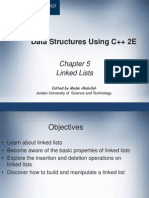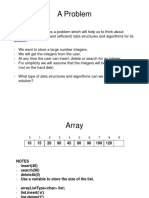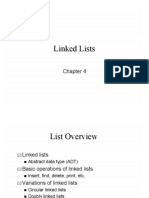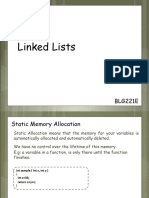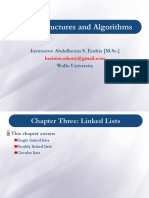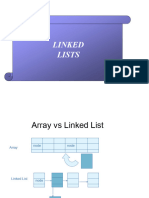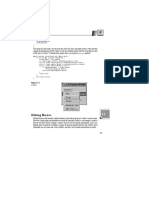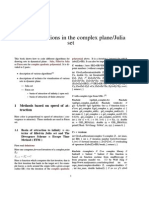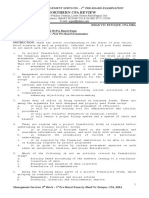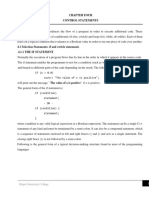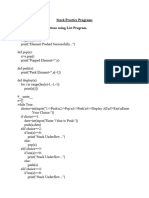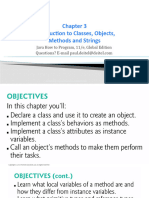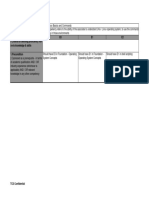0% found this document useful (0 votes)
29 views42 pagesLecture 5 DS
The document provides an overview of a course on Data Structures and Algorithms, focusing on linked lists. It covers the structure and operations of linked lists, including insertion, deletion, and traversal, as well as their advantages over array-based lists. Additionally, it discusses linked lists as Abstract Data Types (ADTs) and outlines various operations that can be performed on them.
Uploaded by
Sondos BelalCopyright
© © All Rights Reserved
We take content rights seriously. If you suspect this is your content, claim it here.
Available Formats
Download as PDF, TXT or read online on Scribd
0% found this document useful (0 votes)
29 views42 pagesLecture 5 DS
The document provides an overview of a course on Data Structures and Algorithms, focusing on linked lists. It covers the structure and operations of linked lists, including insertion, deletion, and traversal, as well as their advantages over array-based lists. Additionally, it discusses linked lists as Abstract Data Types (ADTs) and outlines various operations that can be performed on them.
Uploaded by
Sondos BelalCopyright
© © All Rights Reserved
We take content rights seriously. If you suspect this is your content, claim it here.
Available Formats
Download as PDF, TXT or read online on Scribd
/ 42

